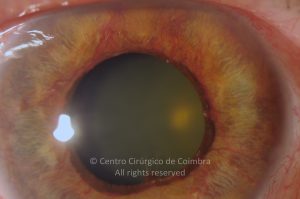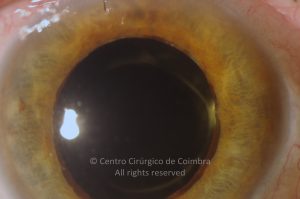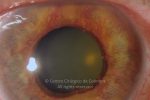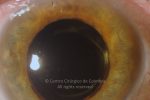Neovascular glaucoma (NVG) is a secondary glaucoma that can result in complete loss of vision. Early diagnosis is essential, as are the treatment of intraocular pressure and the underlying cause of the disease. It is often caused by proliferative diabetic retinopathy, central retinal vein occlusion, carotid occlusive disease, and anterior uveitis.
Numerous diseases lead to retinal ischemia and the subsequent release of vascular endothelial growth factor (VEGF) which diffuses to the anterior segment, causing new blood vessels to grow, originally at the pupil margin and then extending over the iris toward the angle. his leads to the formation of fibrovascular membranes that obstruct the trabecular meshwork, causing secondary glaucoma.
The early stage of NVG is characterized by elevated intraocular pressure, proliferation of fibrovascular tissue over the angle, and neovascularization of iris continuous with neovascularization of the angle. The advanced stage shows elevated IOP ( ≥ 60mmHg), reduced visual acuity, retinal neovascularization and/or hemorrhage.
The treatment for NVG is performed with pan-retinal photocoagulation although surgery may be required to lower the intraocular pressure.









